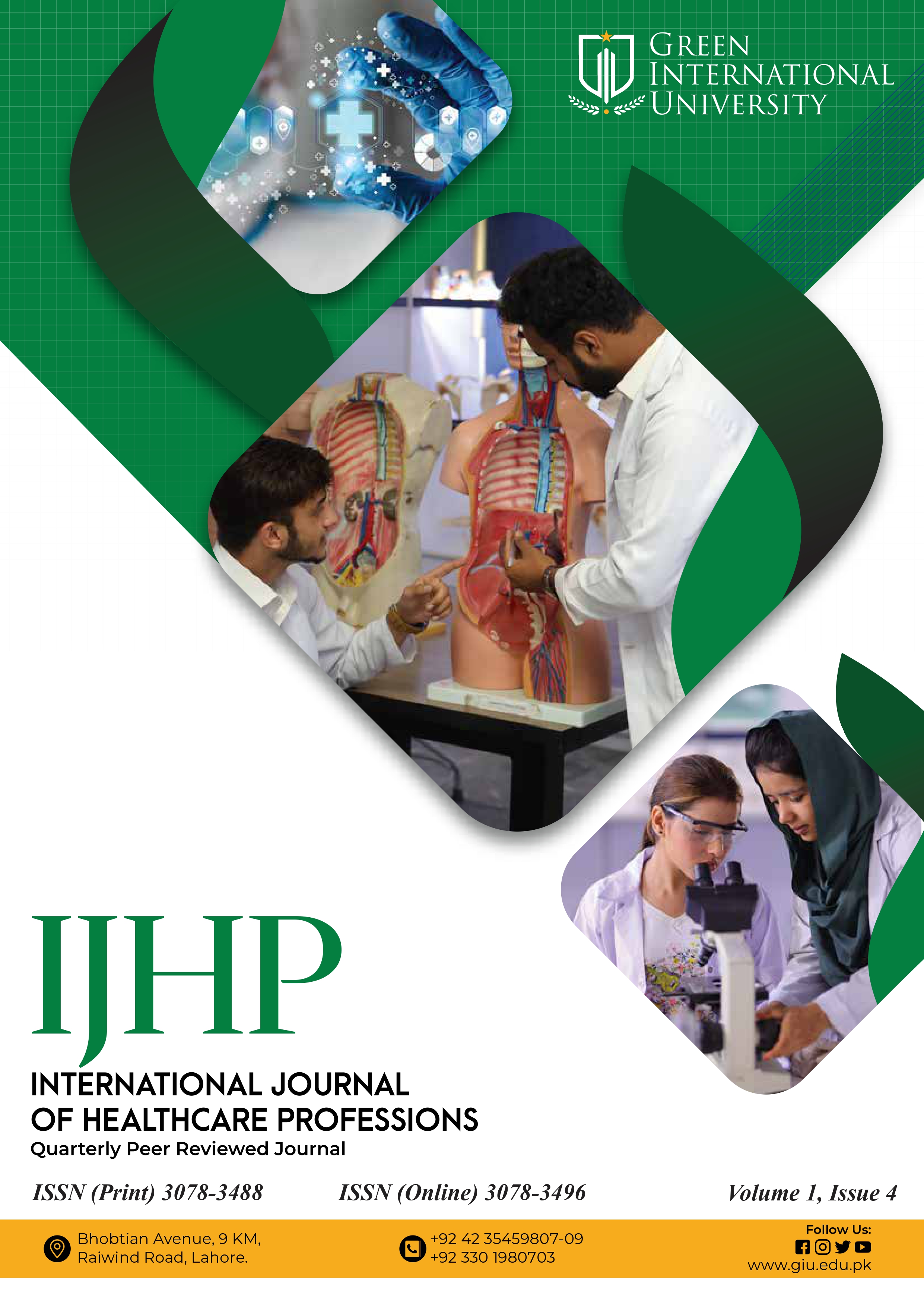The Immunization Dilemma: Confronting Vaccine Hesitancy for better coverage
DOI:
https://doi.org/10.71395/ijhp.1.4.2024.1-2Abstract
Vaccine hesitancy, defined as “a denial, delay, or reluctance to get vaccinated even when effective vaccines are available”, is ranked by the World Health Organization [WHO] among the top ten global health threats with factors like personal beliefs, concerns related to safety and efficacy, social influences, religious factors and the spread of false information contributing to it[1].In Muslim-majority countries like Malaysia, Pakistan, Afghanistan, etc., religious beliefs significantly contribute to vaccine hesitancy[2]. The incidence of outbreaks of vaccine-preventable diseases is proof of outright rejection of vaccines, thus making it crucial for researchers to address religious factors to mitigate problems of this nature. Digital literacy, known as having the ability to use electronic devices correctly to understand, access, evaluate and apply information related to health to improve a health outcome, is considered the most critical factor that plays a role in vaccine hesitancy [3]. Given the ease of access to the internet, ensuring the quality and reliability of health information has become a significant problem in the modern era. Most of the information being provided is either misleading or inaccurate. A key contributor to building public trust in healthcare systems is public health communication, with trust being built effortlessly through effective communication with laymen regarding the safety of vaccines [4]. The Strategic Advisory Group of Experts on Immunization (SAGE) states poor communication hinders
vaccine acceptance in any setting. In 2023, a staggering 14.5 million children were missing out on a vaccination dose, according to WHO [5]. A survey conducted in Pakistan in June 2021 shows a 38% polio vaccine hesitancy rate in low and middle-income communities resulting from fear of vaccine side effects [6].
Vaccine hesitancy claims a spot among the list of public health issues that are critical and prevalent globally, with varied prevalence across different populations and regions. While vaccines are widely recognized as safe and efficient, the coverage is insufficient. The Immunization Dilemma: Confronting Vaccine Hesitancy for better coverage, to achieve herd immunity, with vaccine hesitancy being the root cause [8]. The main reasons for vaccine hesitancy include reliance on alternative medicine, fear of side effects and distrust in medical institutions and services. Betrayal aversion or inability to trust institutions due to fear that they may harm you also significantly contributes to this issue [9]. Conspiracy theories paired with inconsistent and deceptive messages which spread through social media add fuel to the fire by claiming vaccine drives are population control measures or tools for the medical industry to make a profit. Migrant communities show significant barriers to accessing and accepting vaccines. These factors can be addressed through tailored public health strategies and interventions to improve the vaccination acceptance.
References
Garett R, Young SD. Online misinformation and vaccine hesitancy. Translational Behavioral Medicine [Internet]. 2021 Sep 16;11(12):2194–9. Available from: https://pubmed.ncbi.nlm.nih.gov/34529080/
Alsuwaidi AR, Hammad HAAK, Elbarazi I, Sheek-Hussein M. Vaccine hesitancy within the Muslim community: Islamic faith and public health perspectives. Human Vaccines & Immunotherapeutics [Internet]. 2023 Jan 2;19(1). Available from: https://- pubmed.ncbi.nlm.nih.gov/36914409/
Marzo RR, Su TT, Ismail R, Htay MNN, Essar MY, Chauhan S, et al. Digital health literacy for COVID-19 vaccination and intention to be immunized:
A cross sectional multi-country study among the general adult population. Frontiers in Public Health. 2022 Sep 16;10
Goldstein S, MacDonald NE, Guirguis S. Health communication and vaccine hesitancy. Vaccine [Internet]. 2015 Apr 18;33(34):4212–4. Available
from: https://pubmed.ncbi.nlm.nih.gov/25896382/
Adnan Ahmad Khan, Abdullah M, Razia Aliani, Amal Fatima Mohiuddin, Sultan F. COVID-19 vaccine hesitancy and attitudes in Pakistan: a cross-sectional phone survey of major urban cities. BMC Public Health. 2023 Jun 9;23(1).
Shoaib N, Muhammad Atif Qureshi, Muhammad Zahid Latif. Covid-19 Vaccine Hesitancy: Frequency and causes among Population of Lahore. 2023 Feb 28;17(2):139–41. Available from: https://pjmhsonline. com/index.php/pjmhs/article/view/4080
Jerković H, Šitum M. VACCINE HESITANCY – FROM PARENTAL DISTRUST TO COVID-19 CONSPIRACIES. PSYCHIATRIA DANUBINA
[Internet]. 2023 Jul 13;35(2):226–31. Available from: https://www.psychiatria-danubina.com/UserDocsImages/ pdf/dnb_vol35_no2/dnb_vol35_no2_226.pdf
Alsharawy A, Dwibedi E, Aimone J, Ball S. Vaccine Hesitancy and Betrayal Aversion. Annals of Biomedical Engineering. 2022 May 17;50(7):794–804.
Tankwanchi AS, Bowman B, Garrison M, Larson H, Wiysonge CS. Vaccine hesitancy in migrant communities: a rapid review of latest evidence. Current
Opinion in Immunology [Internet]. 2021 Aug;71:62–8. Available from: https://www.sciencedirect.com/- science/article/pii/S0952791521000674
Downloads
Published
Issue
Section
License
Copyright (c) 2025 International Journal of Healthcare Professions

This work is licensed under a Creative Commons Attribution 4.0 International License.
This is an open-access journal and all the published articles / items are distributed under the terms of the Creative Commons Attribution License, which permits unrestricted use, distribution, and reproduction in any medium, provided the original author and source are credited. For comments ijhp@giu.edu.pk






